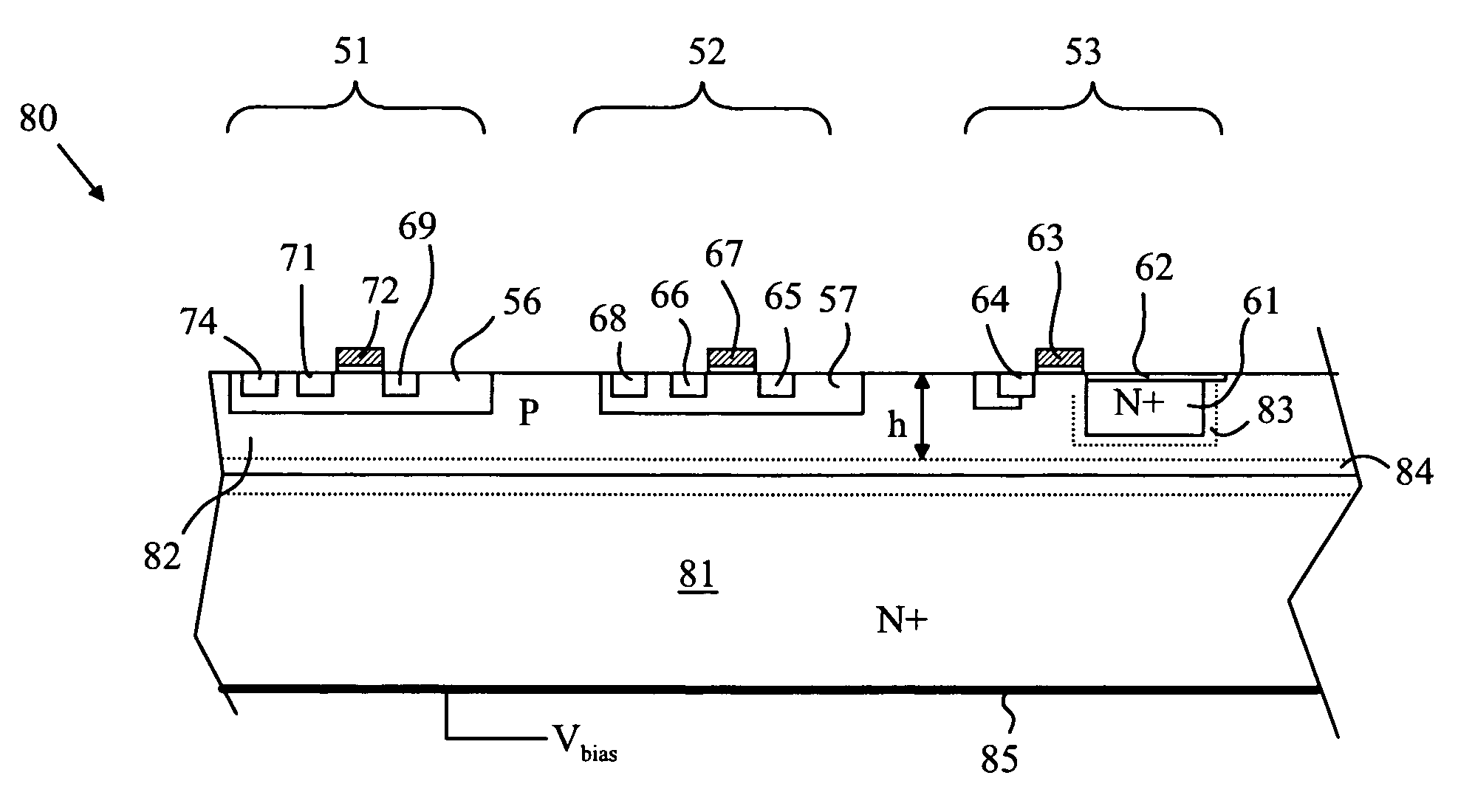CMOS Detector with Reduced Sensitivity to X-Rays
- Summary
- Abstract
- Description
- Claims
- Application Information
AI Technical Summary
Benefits of technology
Problems solved by technology
Method used
Image
Examples
Embodiment Construction
[0018]The manner in which the present invention provides its advantages can be more easily understood with reference to FIGS. 1 and 2, which illustrate a prior art dental sensor. FIG. 1 is a top view of dental sensor 30, and FIG. 2 is a cross-sectional view through line 2-2 shown in FIG. 1. Dental sensor 30 includes a layer 32 of scintillation material that converts x-rays to light in the visible region of the spectrum. The light generated in layer 32 is viewed by an image sensor 31 through a channel plate 33 that consists of a bundle of optical fibers that map the surface of the scintillation material onto image sensor 31. Sensor 30 is placed inside the patient's mouth and held in place by the patient biting down on tab 34. When x-rays from a source outside the mouth impinge on sensor 30 after passing through the patient's teeth, the x-rays strike layer 32. Each interaction between an X-ray and the material of layer 32 results in multiple visible photons being generated. The photon...
PUM
 Login to View More
Login to View More Abstract
Description
Claims
Application Information
 Login to View More
Login to View More - R&D
- Intellectual Property
- Life Sciences
- Materials
- Tech Scout
- Unparalleled Data Quality
- Higher Quality Content
- 60% Fewer Hallucinations
Browse by: Latest US Patents, China's latest patents, Technical Efficacy Thesaurus, Application Domain, Technology Topic, Popular Technical Reports.
© 2025 PatSnap. All rights reserved.Legal|Privacy policy|Modern Slavery Act Transparency Statement|Sitemap|About US| Contact US: help@patsnap.com



